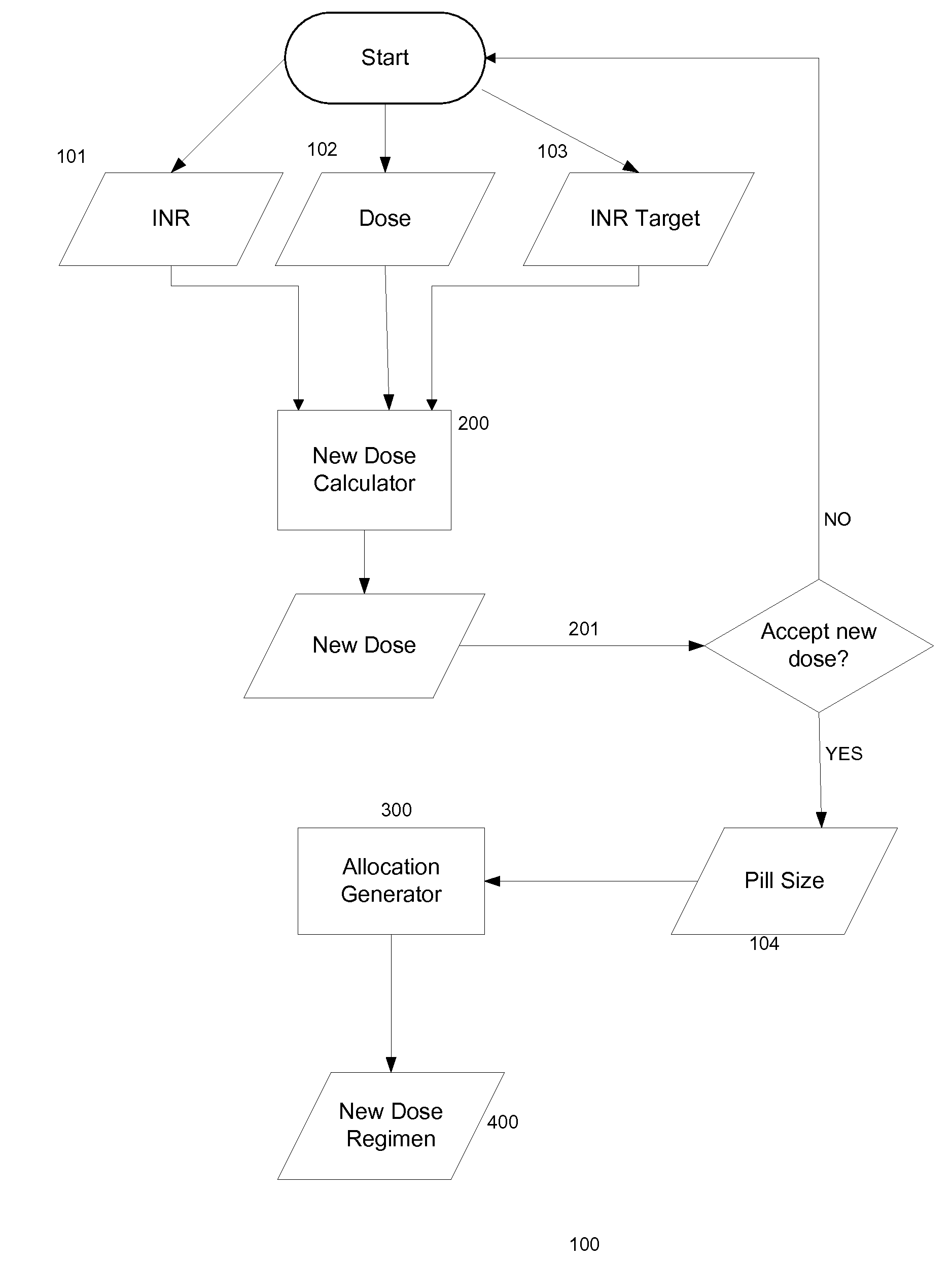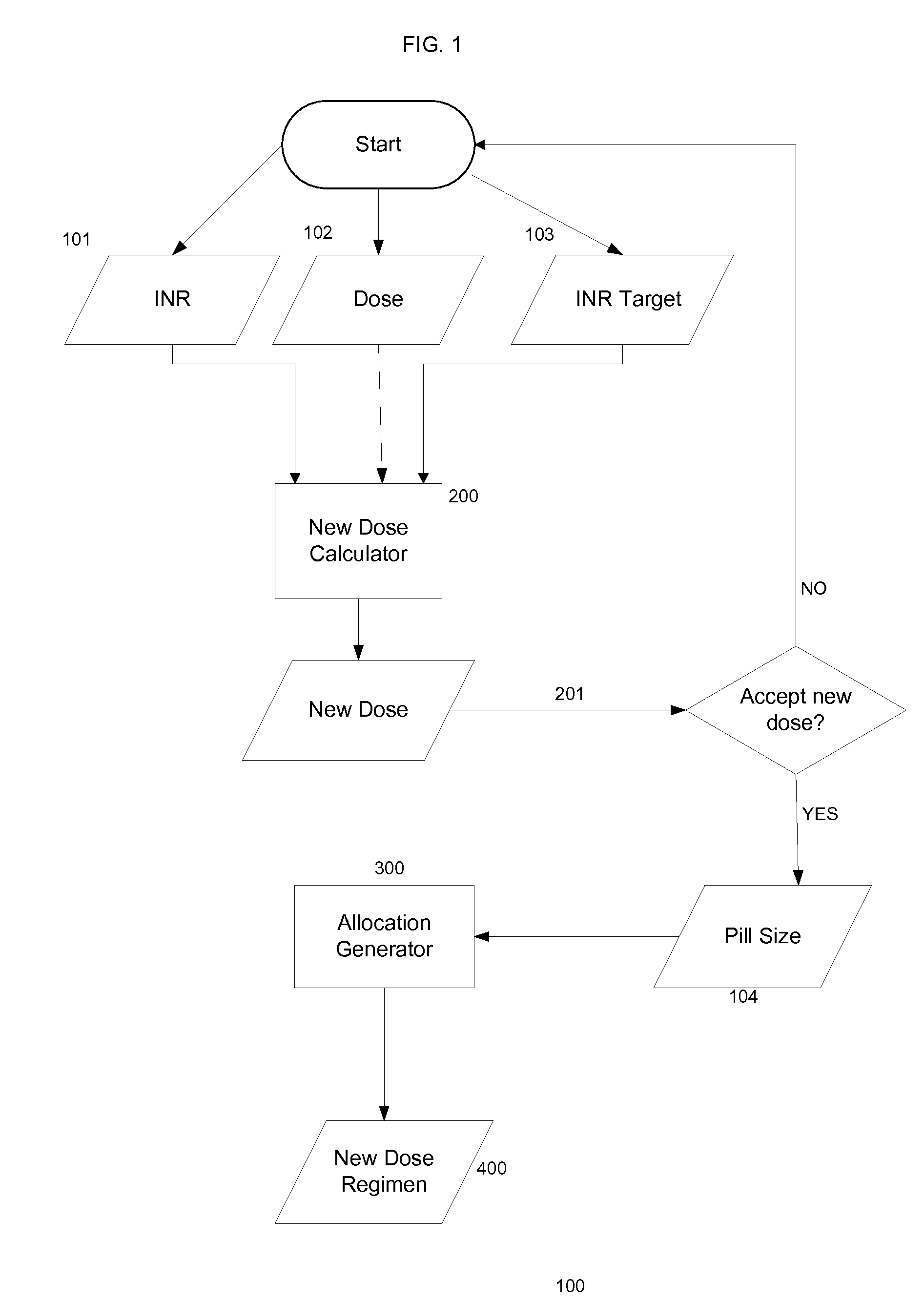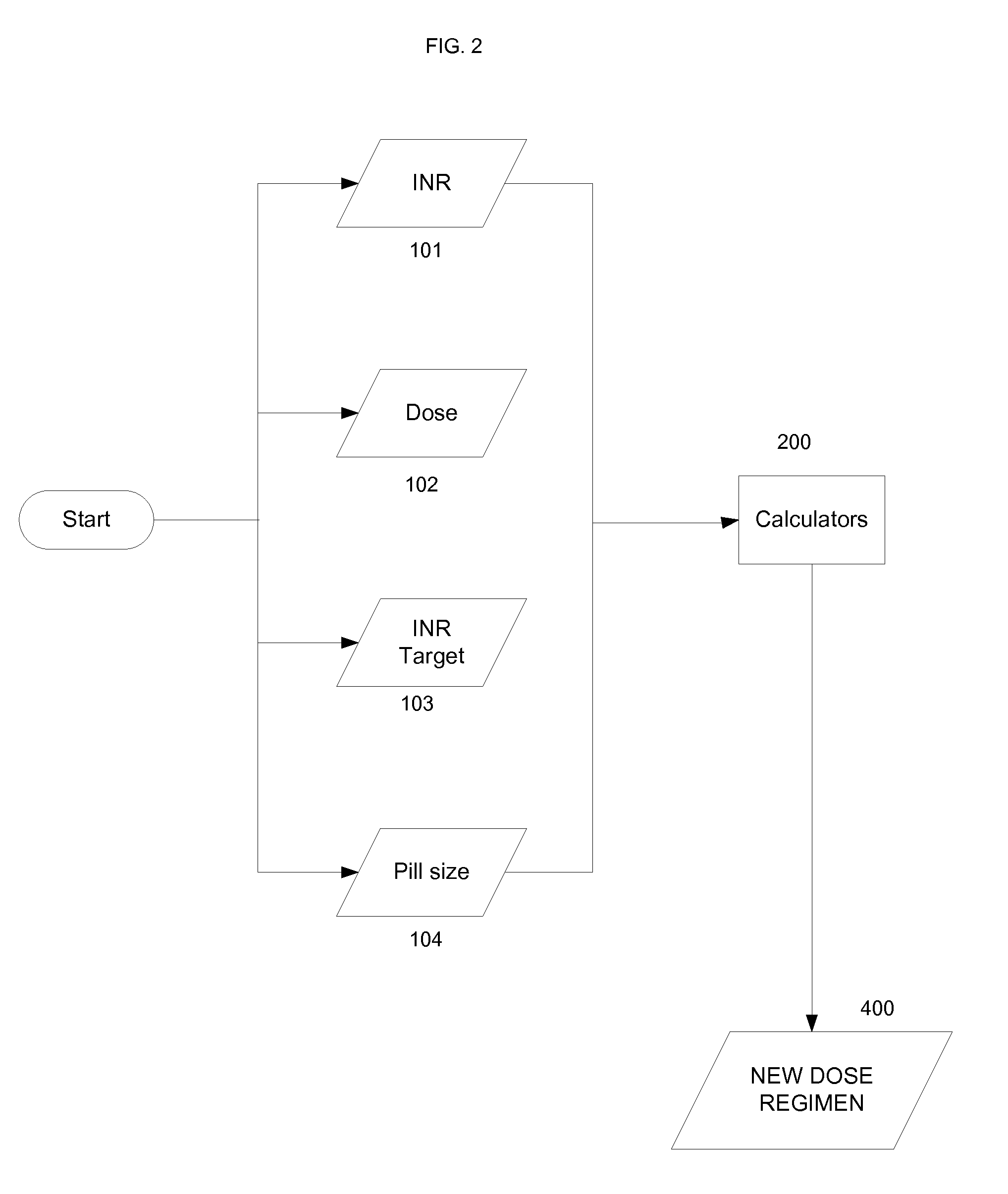Methods for management of anticoagulation therapy
a technology for managing and anticoagulation therapy, applied in the field of management methods for anticoagulation therapy, can solve the problems of treatment failure or complications, difficult management of anticoagulants,
- Summary
- Abstract
- Description
- Claims
- Application Information
AI Technical Summary
Benefits of technology
Problems solved by technology
Method used
Image
Examples
example 1
Program for Management of Anticoagulation Therapy
[0109]A program (100) for management of anticoagulation therapy was developed (FIG. 1). The program required input of four data points: INR value (for a current blood sample) (101); dose (of warfarin from the previous week) (102); INR target for treatment (either 2.0 to 3.0 or 2.5 to 3.5) (103); and pill size (104) (FIG. 2). Data points 101-104 were input into calculators 200 to produce a new dose regimen (400). More specifically, the program (100) accepted data points 101-103 into new dose calculator (200) to calculate a new dose (201). The new dose (201) along with pill size (104) was then sent to the Allocation Generator (300) to produce new dose regimen (400).
[0110]A new dose was generated by the new dose calculator (200) (FIG. 3). The new dose calculator sorted the INR reading (101) into an appropriate category 1.0-1.3, 1.4-1.6, 1.7-1.9, 2.0-3.0, 3.1-3.5, 3.6-4.0, 4.1-4.5, and >4.5. Based on the category of INR, and the INR targe...
example 2
Interface for Program for Anticoagulant Therapy
[0114]An interface for a program for anticoagulant therapy as described in Example 1 was created (FIG. 5). The interface was called up on a computer as a web page by entering in a URL. The program was embedded in the web page. Data was entered by typing into the boxes on the interface. In the first row, daily doses for the previous week were entered. In the second row, the current INR and INR goal were entered. In the fourth row, the pill size was entered. The colors of the boxes for pill sizes correspond to the colors of the respective warfarin pills.
[0115]The calculations were performed by pressing the buttons on the interface. The “current dose” button calculated the weekly cumulative dose and average daily dose. The “new dose” button calculated the new recommended dose, and the difference between the old dose and new recommended dose. The new warfarin dose was displayed after pressing the “new dose” calculation button, and provided ...
example 3
Clinical Management of Warfarin Dosing
[0117]A. S. is a 78-year-old white woman with atrial fibrillation. A. S. started on warfarin and after stabilization of her dose, her Protime / INR was checked once a month. On the first day, her INR was 1.6. Her warfarin dose was 4 mg on Mondays, Wednesdays, and Fridays and 2 mg on the remaining days of the week. Her INR, dose for the previous week, INR target, and pill size were inputted into the program described in Example 1. The program calculated A. S.'s new dose, which was 4 mg to be taken 6 days a week and 2 mg on Saturday. A. S.'s INR was taken 2 weeks later and was 2.8, within the target range.
PUM
 Login to View More
Login to View More Abstract
Description
Claims
Application Information
 Login to View More
Login to View More - R&D
- Intellectual Property
- Life Sciences
- Materials
- Tech Scout
- Unparalleled Data Quality
- Higher Quality Content
- 60% Fewer Hallucinations
Browse by: Latest US Patents, China's latest patents, Technical Efficacy Thesaurus, Application Domain, Technology Topic, Popular Technical Reports.
© 2025 PatSnap. All rights reserved.Legal|Privacy policy|Modern Slavery Act Transparency Statement|Sitemap|About US| Contact US: help@patsnap.com



